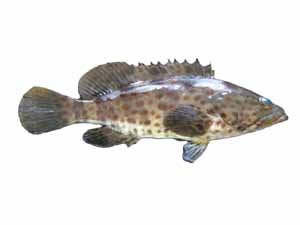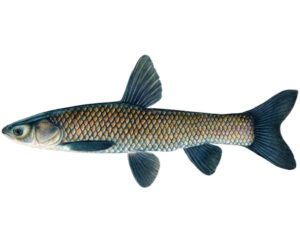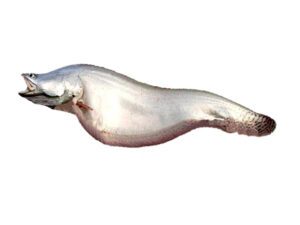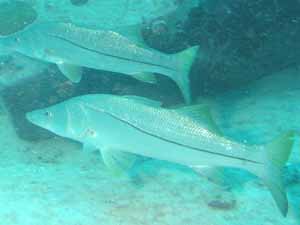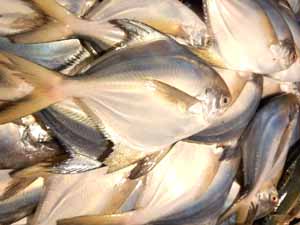The Palometa fish is an ocean-going game fish which belongs to the Carangidae family. It is native to the western Atlantic Ocean from Massachusetts to Bermuda to Argentina. It can also be found in the Gulf of Mexico and the Caribbean Sea.
The Palometa is primarily considered as a game fish, and there have been reports of ciguatera poisoning. Although, the Palometa fish is used in aquaculture, few are captured for the aquarium trade. And the fish is rarely used for any other purpose than as a game fish.
What is Palometa fish?
The Palometa is an ocean-going game fish. It belongs to the family Carangidae, and it is native to the western Atlantic Ocean from Massachusetts to Bermuda to Argentina. The fish can also be found in the Gulf of Mexico and the Caribbean Sea. It is known by many names in many parts of the world. Its other names include banner pompano, camade fish, cobbler, gafftopsail, great pompano, joefish, longfin pompano, old wife, sand mackerel, streamers jack, wireback etc. And scientific name for this fish is Trachinotus goodei.
Palometa fish in English
English name of this fish species is Goode’s Palometa, Goode’s Pompano Fish, or simply Palometa.
Characteristics
Like all other fish species, the Palometa fish also has several distinctive physical characteristics. It has a laterally compressed, disk-like body which is roughly oval or diamond-shaped. The body is predominantly silvery with a shiny, reflective appearance. The fish may have a slightly pale yellowish hue along the sides or fins in certain individuals. But the overall color is a bright, metallic silver, which is similar to other pompano species.
The head is relatively pointed with a sharp snout. Their eyes are prominent and situated slightly laterally. Their first dorsal fin is triangular and pointed, and the second dorsal fin is longer and more pronounced. The pectoral fins are relatively large and elongated. And their tail is forked. Their dorsal fin usually has seven or eight spines and 19-20 soft rays, while the anal fin has 2 or 3 spines and 16-18 soft rays.

Size and weight
Average body length of the Palometa fish is typically between 25 to 30 cm. Although some individuals can reach up to 40 cm. And the largest known Palometa was 50 cm long. And their average body weight is typically between 1 to 2 pounds.
Diet
The Palometa is a carnivorous fish and its diet primarily consists of smaller fish, crustaceans, and other invertebrates. They are active predator and they forage near the bottom of the water column (often around sandy, muddy, or reef areas where its prey is abundant).
Reproduction
The Palometa fish reproduces through external fertilization in coastal waters. They reproduce during the warmer months, typically in spring and summer. During spawning, the female fish release their eggs into the water, and the males simultaneously release sperm over the eggs to fertilize them. Then the eggs hatch into pelagic larvae which drift in the open water until they mature.
The juveniles then move to shallow, nearshore environments where they grow. The juveniles are feed on smaller fish and invertebrates. And then they become mature, and typically reach maturity within their 1-2 years of age.
Lifespan
Average lifespan of the Palometa fish is typically between 3 to 4 years. Although, their exact lifespan depends on numerous factors such as environment, diet etc.
Uses
The Palometa is mainly used as a recreational or game fish. Although, it is an edible fish and it is prized for its mild, tender, and flaky white flesh.
Cooking and recipes
The Palometa fish can be cooked in many different ways. It can be grilled, pan-seared, and baked. You can choose any cooking method and try different recipes for enjoying this fish.
Taste
The Palometa fish taste good. It has a mild, sweet, and delicate flavor. It has white flesh which is white, tender, and flaky, with a slightly buttery texture that is not overly fishy. The fish is often considered a delicacy, especially in regions where it is abundant (such as the Caribbean and Southeast United States).
Nutrition and health benefits
The Palometa fish is highly nutritious. A 100 grams serving of this fish provides:
- Calories: 120–140 kcal
- Protein: 20–22 g
- Total Fat: 5–6 g
- Saturated Fat: 1–1.5 g
- Monounsaturated Fat: 2–3 g
- Polyunsaturated Fat: 1–1.5 g
- Cholesterol: 30–40 mg
- Sodium: 60–70 mg (this can vary depending on how the fish is prepared)
- Omega-3 Fatty Acids: 1–2 g
- Vitamin D: 100–150 IU
- Vitamin B12: 3–4 mcg
- Selenium: 20–30 mcg
- Phosphorus: 200–250 mg
Consumption of Palometa fish can be a good source of high-quality protein. It contains a moderate amount of omega-3 fatty acids. And omega-3 fatty acids are beneficial for hearth health, reducing inflammation, and supporting brain function. It is low in carbohydrates and rich in some vitamins and minerals.
Price
It is actually not possible for us to tell the exact price of these fish. Because exact price of this fish depends on numerous factors and can vary from place to place. Generally, you can expect the price between $8 to $12 for fresh whole fish. And average price of the fresh fillets is typically between $15 and $20. Price of frozen fish is less, and typically range between $7 to $10 per pound.
Frequently asked questions (FAQs)
People often ask many questions regarding this fish species. Here we are trying to list the most common and notable frequently asked questions about Palometa fish species and trying to answer those questions.
Are Palometa fish good to eat?
Yes, the Palometa fish is a mild, sweet-tasting fish with tender, flaky flesh. You can enjoy this fish in many different ways including grilling, frying and baking.
Can you eat Palometa fish?
Yes, sure. It is an edible fish and very tasty. You can enjoy it in many different ways including grilling, frying, baking etc.
How to catch Palometa fish?
You can catch Palometa fish by using light to medium tackle with a 10 to 20 pound test line. Fish with live bait like sand fleas, shrimp or small crabs. You can also fish by using artificial lures such as jigs and spoons.

